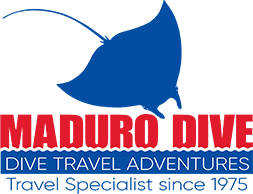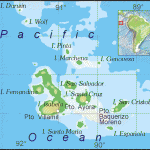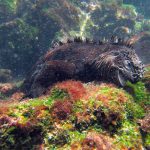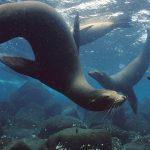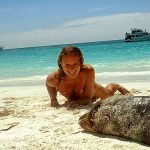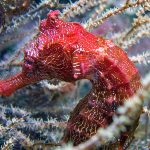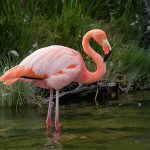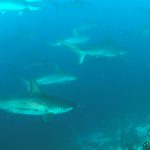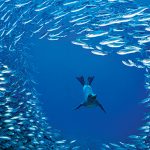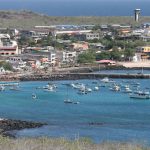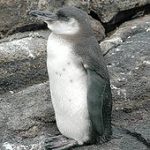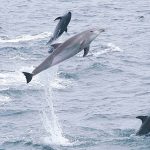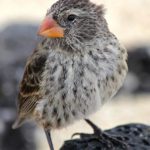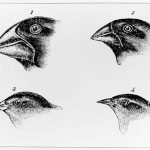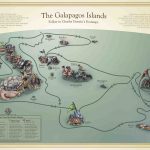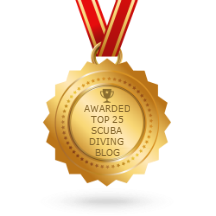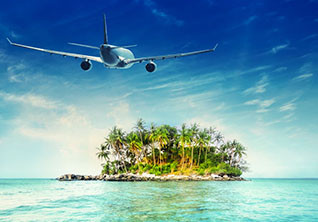The Galapagos Islands
A Natural Selection for Divers
There are thousands of islands around the world where fish are plentiful, birds fill the trees, and volcanoes are still active, but there is only one group of islands that has changed so profoundly the way we think about evolution of animal species; including how we even now view ourselves. In 1835, while on a five-year voyage, a young geologist/naturalist by the name of Charles Darwin visited the Galapagos Islands and collected various endemic plants, animals, and geological rock samples. Because the endemic giant tortoises looked like saddles, the Spanish named the islands in 1570 after the tortoises: “Insulae de los Galopegos”. The local acting governor, Nicholas Lawson, told Darwin how tortoise populations looked different on each island, but it wasn’t until the home voyage that Darwin pieced together that some of the collected species of birds were actually just different species of finches that had radiated out with specialized beak shapes, sizes, and lengths to fill separate niches on distinct islands in the Galapagos archipelago. Unfortunately, the exact island where each finch was caught was not recorded at the time of capture, but it’s been all sorted out since then.
There are 18 main islands and some 100 plus rocks, islets, and minor islands that make up the Galapagos Islands. Volcanoes sprout above the surface on the west end of the Nazca Plate and form islands, and like a conveyor belt they are moved eastward with time until they slowly sink beneath the waves in a never-ending process of final seduction; for at least the last 90 million years. So, you have young tall volcanoes/ islands on the west side, and older eroded volcanoes/islands on the east side. Since the Galapagos Island are part of Ecuador, we will rely on their Spanish names for the most part, but some English names remain from the inked on English made maps before Darwin’s voyage.
Six volcanoes make up one of the newest and largest islands being formed called Isabela; it is 1,707m (5,600ft) tall at the top of Wolf Volcano. Española on the east-side is over 3.5 million years old. The age, height, and placement of the islands effects the type of animals, and birds willing to make each particular island their home, and also effects the local sea life as well. You can see these variations and preferred habitats played out over and over again as you discover for yourself. So just like Darwin you have a chance to see the waved albatross colony on Punta Espinosa, the pink flamingos on Floreana or in Flamingo Lagoon on Santa Cruz, the nocturnal species of swallow-tailed gulls on Genovesa, the vampire finch of Wolf Island (drinks blood from other birds), or one of the many colonies of the flightless cormorants or the Galapagos penguin; the only penguin found north of the equator. Oh, and we’d be remiss if we didn’t mention the red-footed, blue-footed, and two-footed Nazca Boobies.
For divers, this is a bucket list destination but the wonder of these islands runs naturally much deeper. With 28 species of sharks and over 400 species of fish and with 17% of them found no where else in the world such as the red-lipped bat fish, Galapagos clingfish, Galapagos grunt, and Galapagos garden eel. This makes these islands a must dive literal hot spot; over 62 dive sites to be exact. New divers or divers seeking less strenuous diving activities can enjoy the inner circle islands where you will see Galapagos seals, and marine iguanas, and most other species of birds and fish, but advanced divers who don’t mind strong currents, downdrafts, and general drift diving, the outer islands are the place to view whale sharks and larger schools of passing hammerhead sharks.
For those that remain land based, which gives you more time to do land excursions as well as scuba dive the inner circle of islands, Cabo Douglas off Fernandina Island is a good spot to see flightless cormorants, sea lions, and penguins zip by in the water next to you while marine iguanas eat algae. Bartholomew Point off Bartholomew Island is another good spot to view swimming penguins and sea lions. Cousins Rock off Santiago Island is a great place to do wall dives and view sea lions, Pitt Point off San Cristobal Island is good place to see schools of fish, grunts, and diving boobies; San Cristobal is also the home of the new dive called the Cave which is home to lobsters, a turtle or two, and passing tunas and rays. Gordon Rocks, also called the “Washing Machine”, an advanced dive, is known for a wide array of sharks and rays. Seymour Channel is known for its turtles, cleaning stations, and garden eels. Daphne Major has walls, caves, and WWII bombing practice artifacts. Camano Islet off Santa Cruz Island is known for grouper, batfish, and seahorses. An absolute must see is the Charles Darwin Research Station on Santa Cruz for more understanding of his discoveries, native flora and fauna, land iguanas and meet the long living giant tortoises.
For those that want to dive the majority of the previously mentioned dive sites, plus desire a chance to see large pelagics you’ll need a liveaboard vessel to take you out to these most distance destinations, which incidentally traveling this way puts Darwin’s voyage of the Beagle to shame, and you usually wake up at these sites after an all-night voyage. Some of the best dive sites out here include: at Darwin Island, the arch, the sands, and at Wolf Island you will see large pelagics in addition to local fish at the landslide, roca elefante, and shark bay. June through November is the best time to see the whale sharks out here. The rest of the year expect to see mantas, rays, sea lions,scalloped hammerheads, silky, and Galapagos sharks. Diving to these remote locations aboard liveaboards means no shore time but you will get multiple and unforgettable dives.
As for when to visit these islands? The warm or hot and rainy season is December to May-June and this is when the seas are calmer and you can wear a 5ml wetsuit. At this time of year, you might even see a few snorkelers around the inner circle of island shoreline wearing 3ml shorties. Hammerhead sharks are in great abundance during this time period. From June to November the water is colder as it pushes up from the coast of south America and requires a 7ml suit and hood or dry suit. The plankton blooms can lower the visibility in the water varying from 15-30 meters (45-90 ft), but the plankton also brings in the whale sharks and other numerous species . These two seasons may vary due to the El Niño effect. June, July, and August are the busiest season. Many who want the full Galapagos Island experience will spend time both land based on the islands as well take a liveaboard trip. Expect the local species to not be afraid of humans allowing you to get close to certain species than ever thought possible. Expect to also spend a night or two in Quito or Guayaquil on the Ecuador mainland when traveling to the Galapagos Islands. Also, expect to be very impressed by the Galapagos Islands but you will not have to endure the controversy or suggestions of heresy that surrounded Darwin’s life after the voyage.
It’s been almost 150 years ago since Darwin published the theory that all species evolve by the basic process of natural selection. No matter what your personal beliefs are, we believe that as humans, we have little choice but to evolve in our awareness of the world’s species so that we can protect them and share them with our own future generations; and traveling around the planet to encounter, face to face, unique, rare, and/or exotic sea creatures is one of many aspects that defines us as true divers and/also world explorers.
